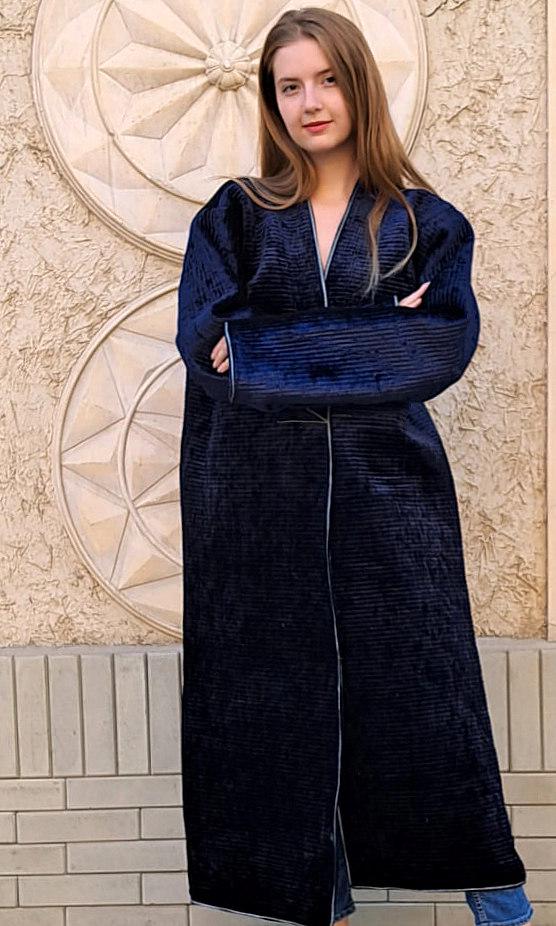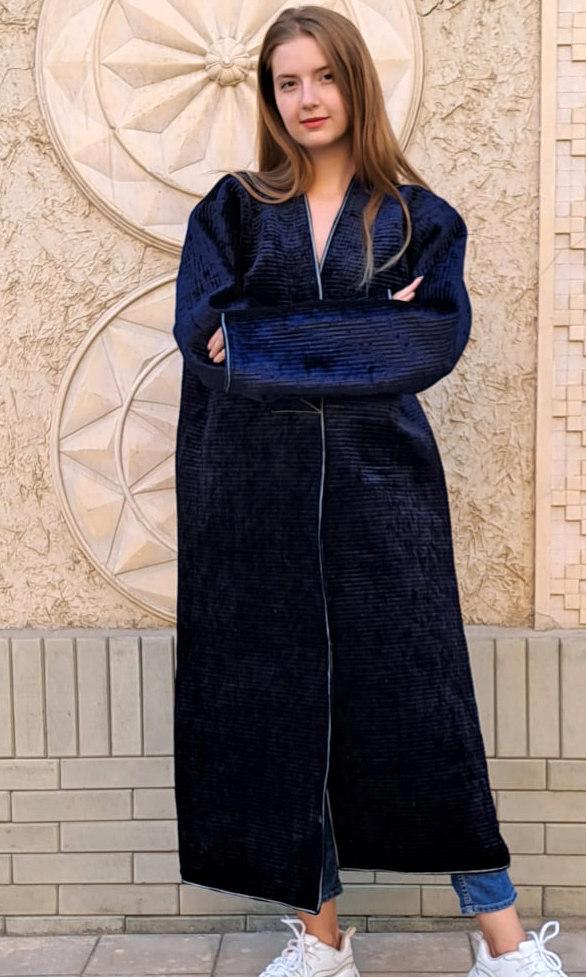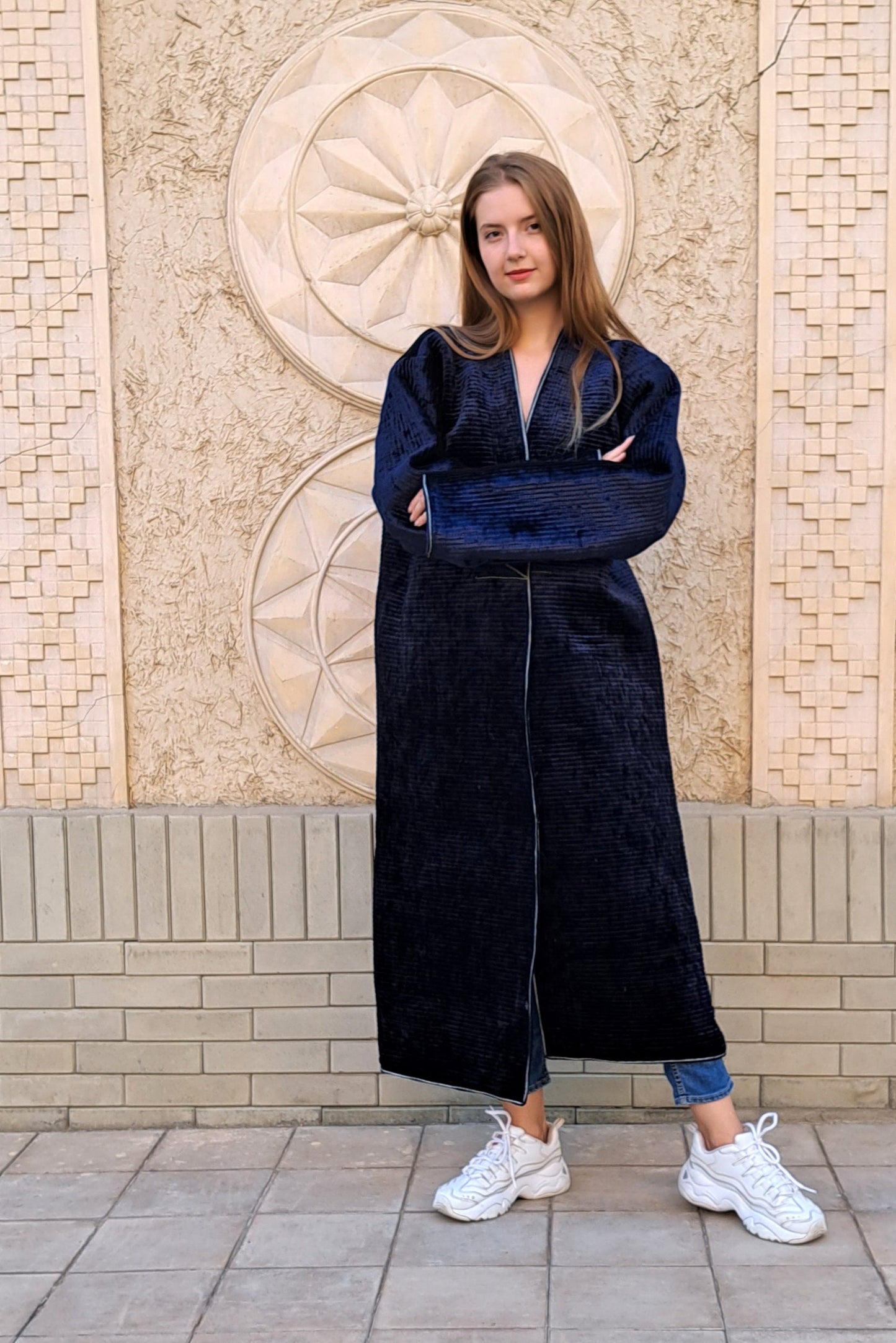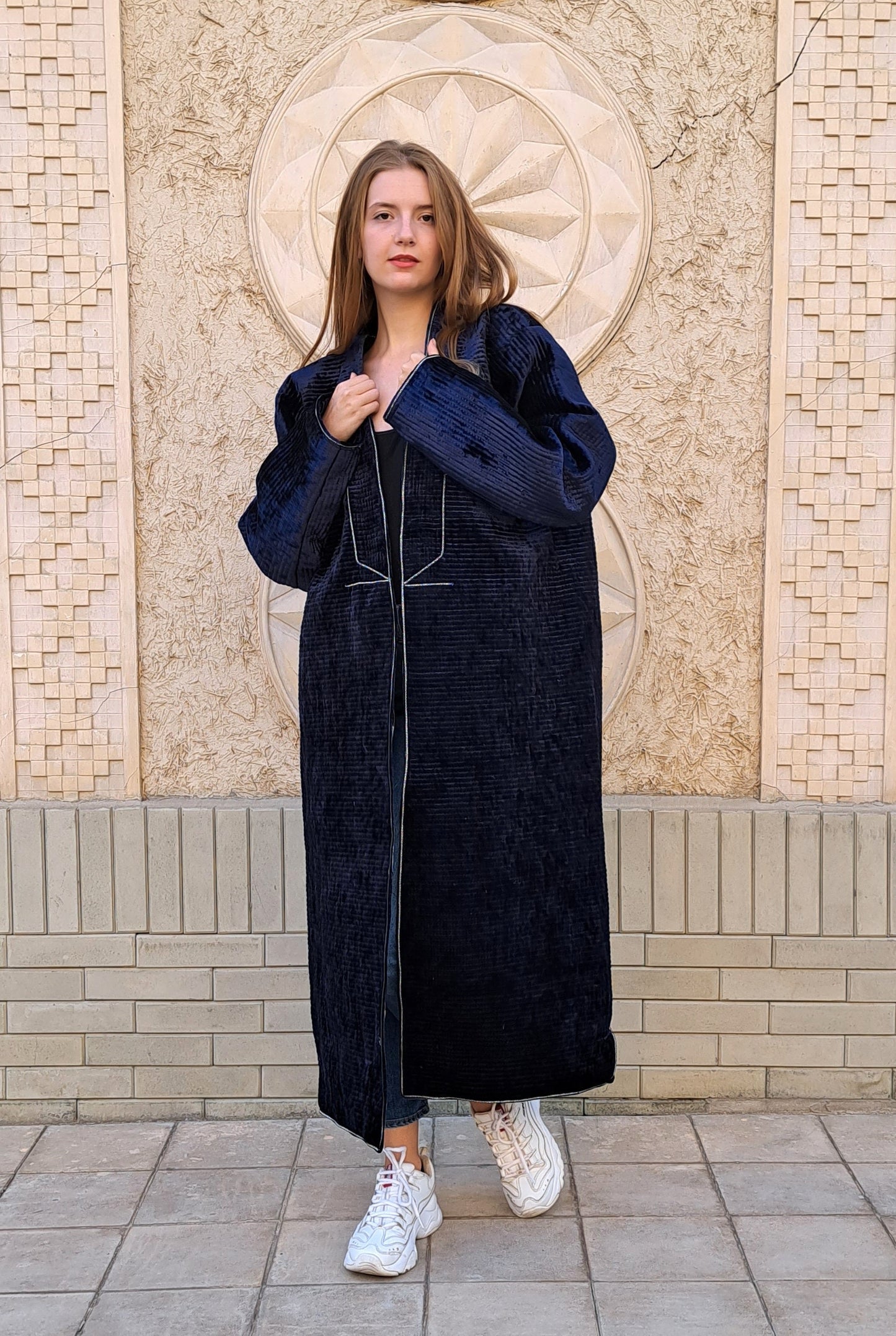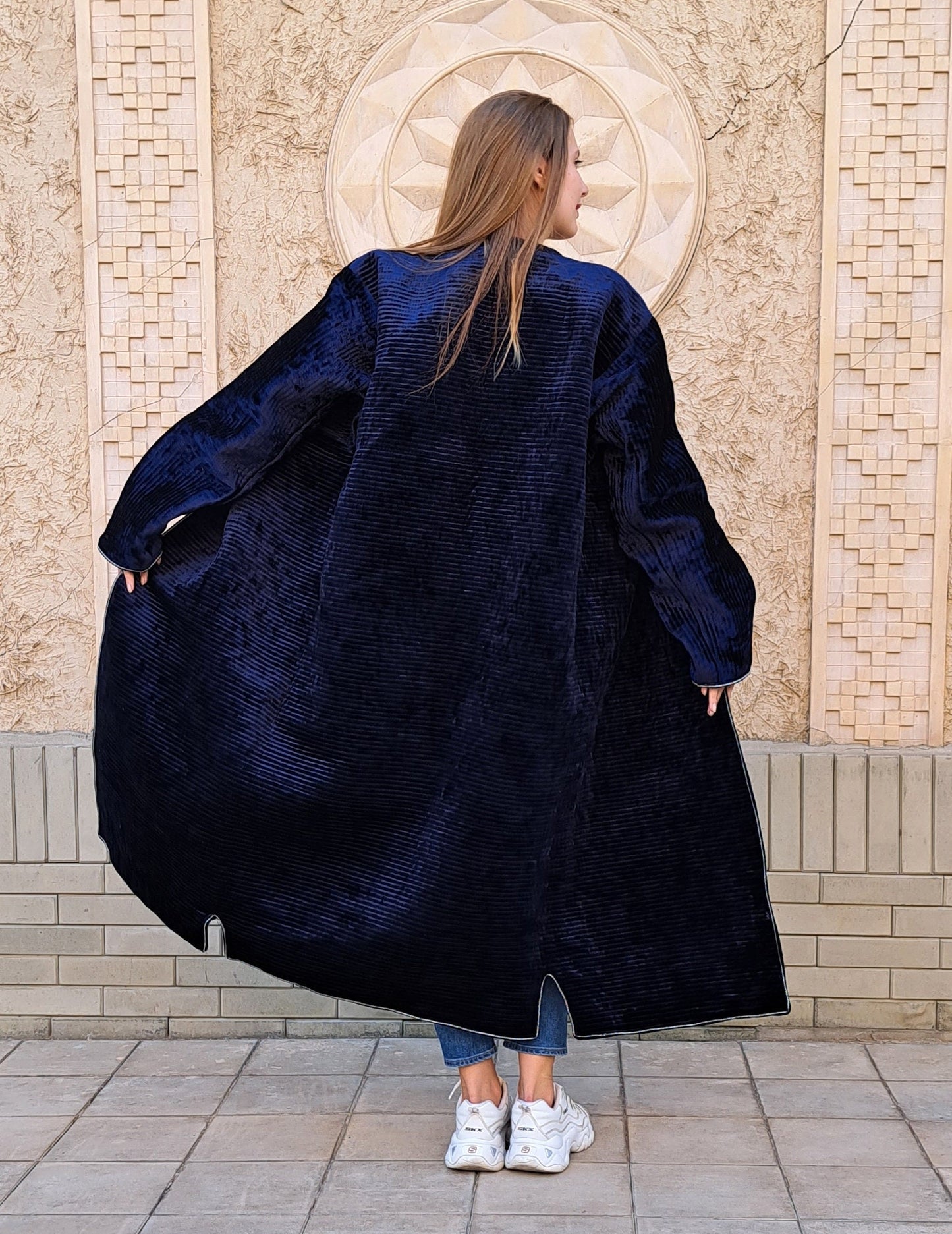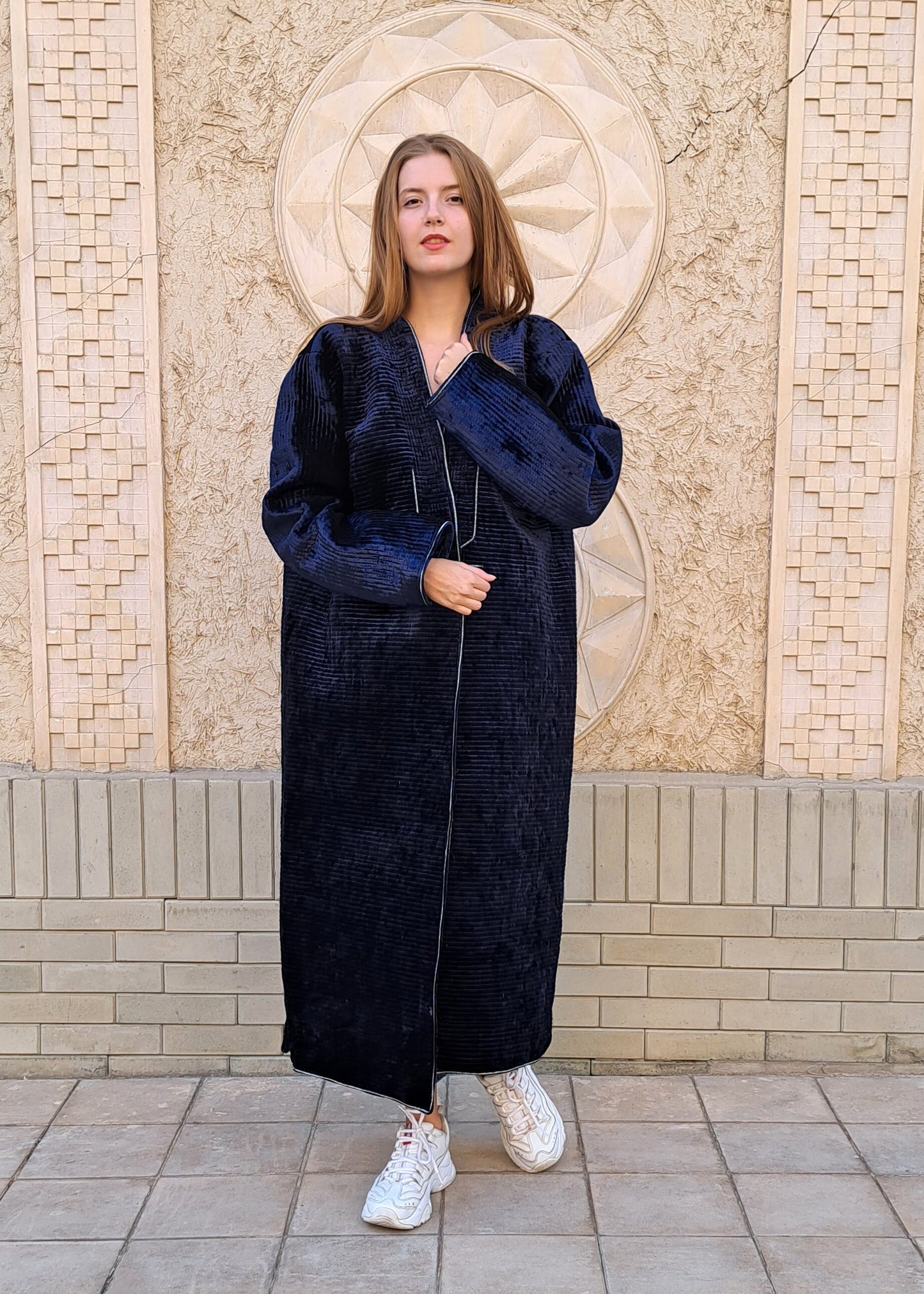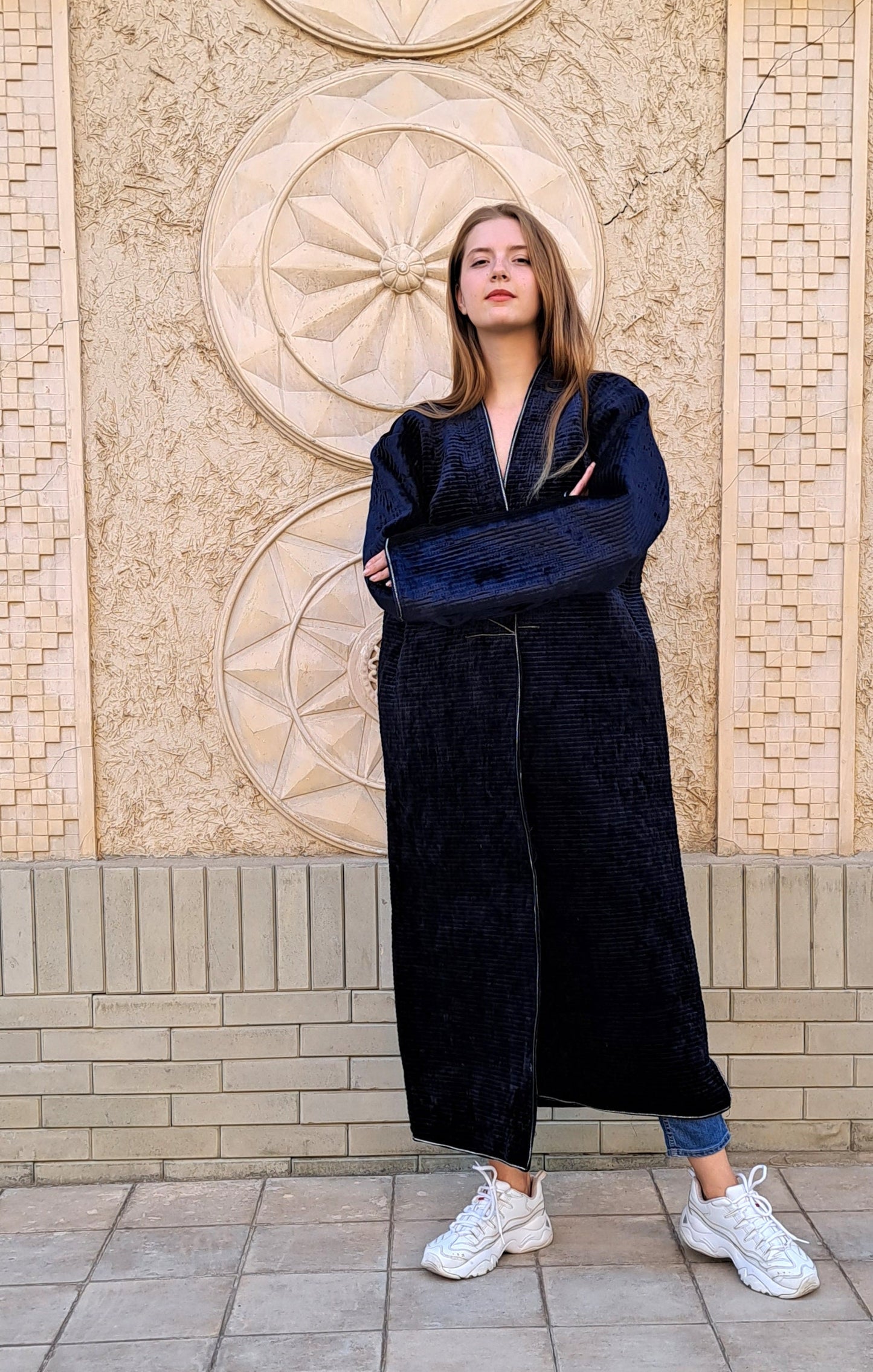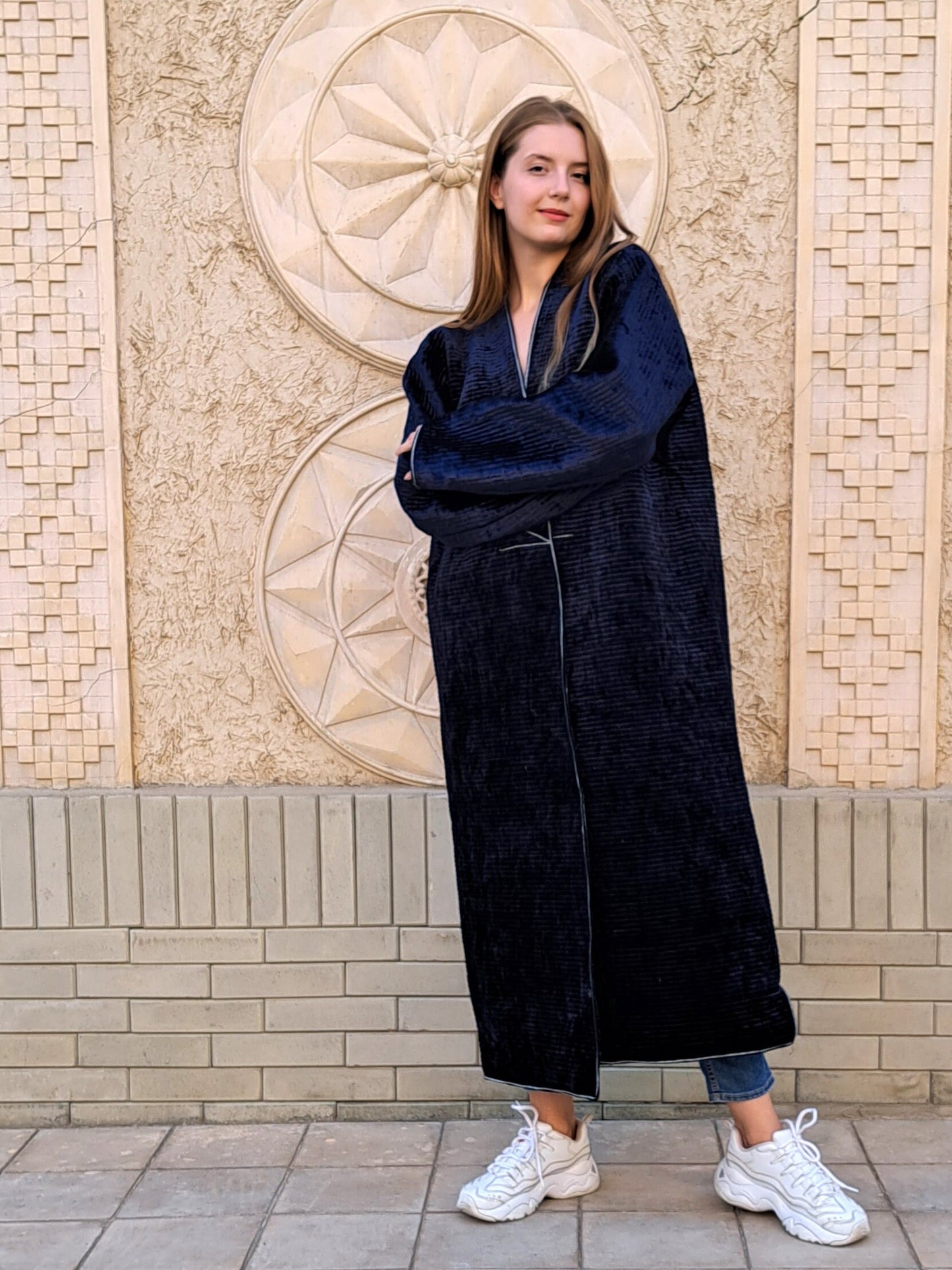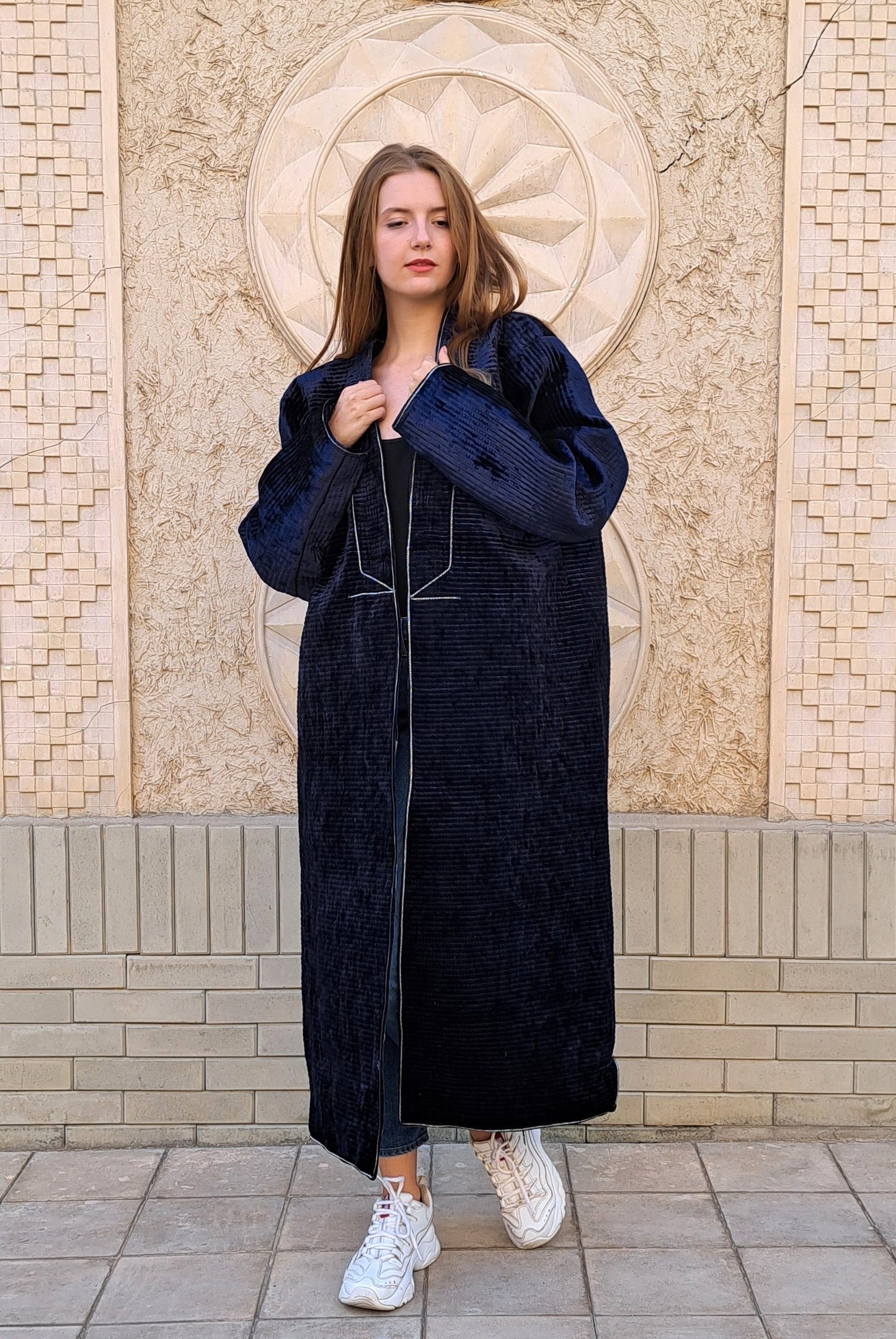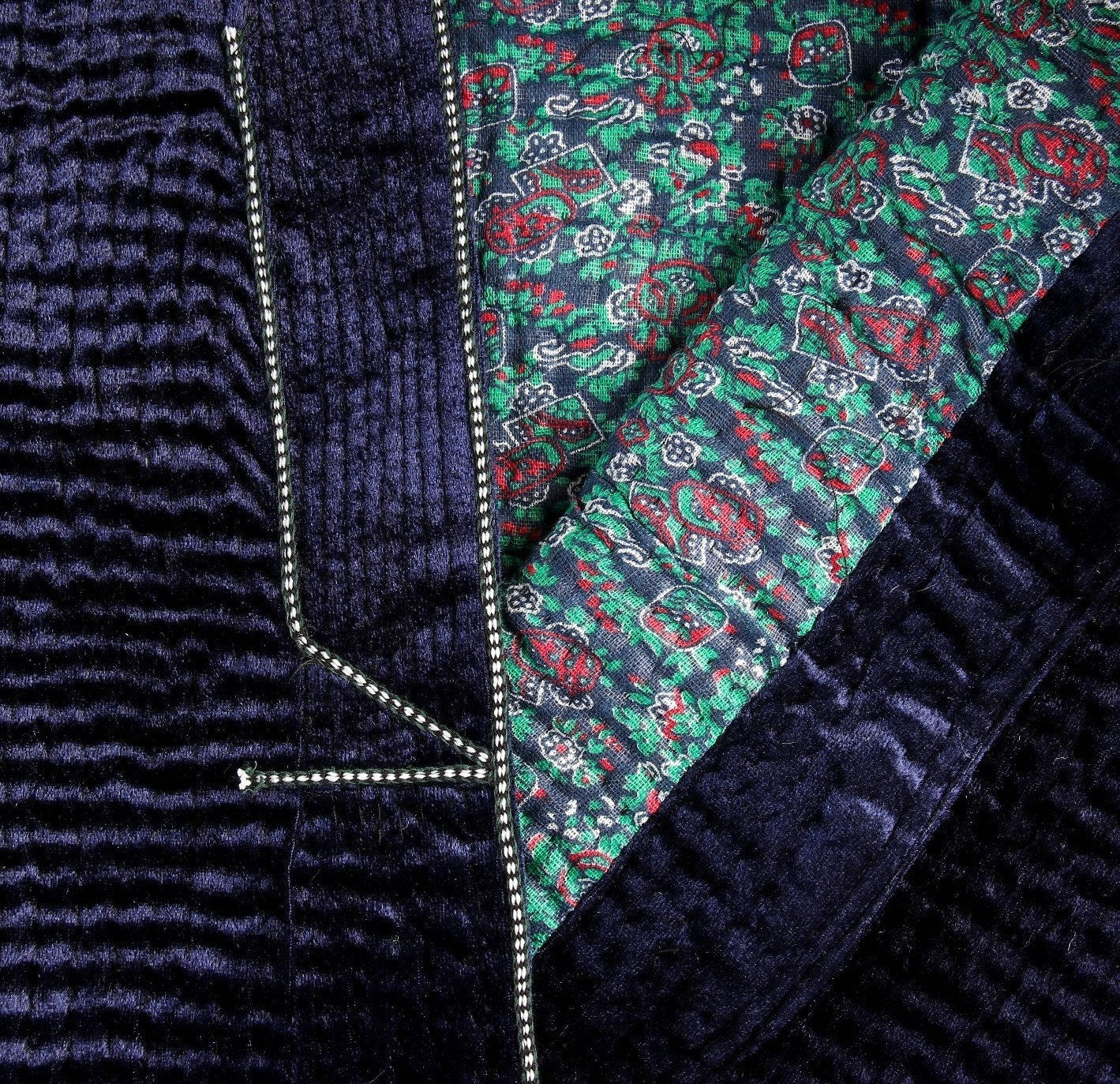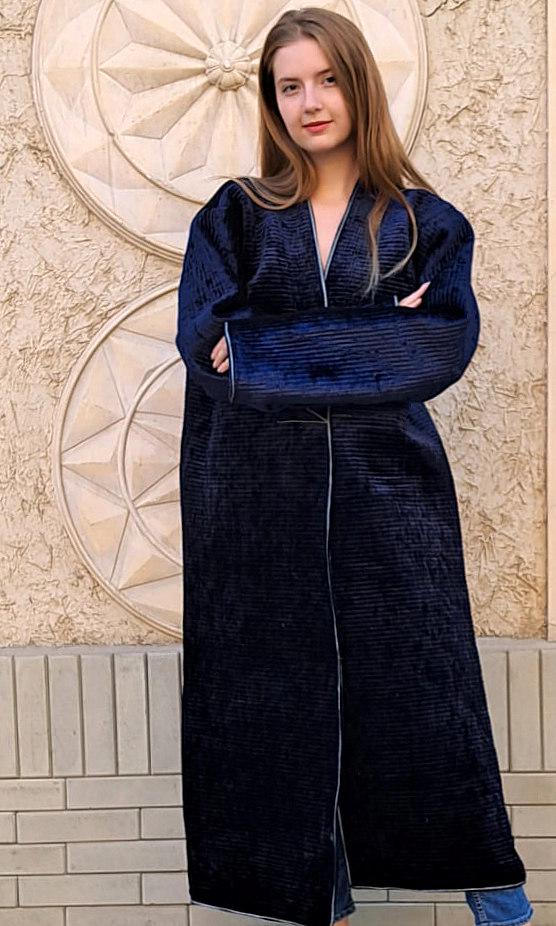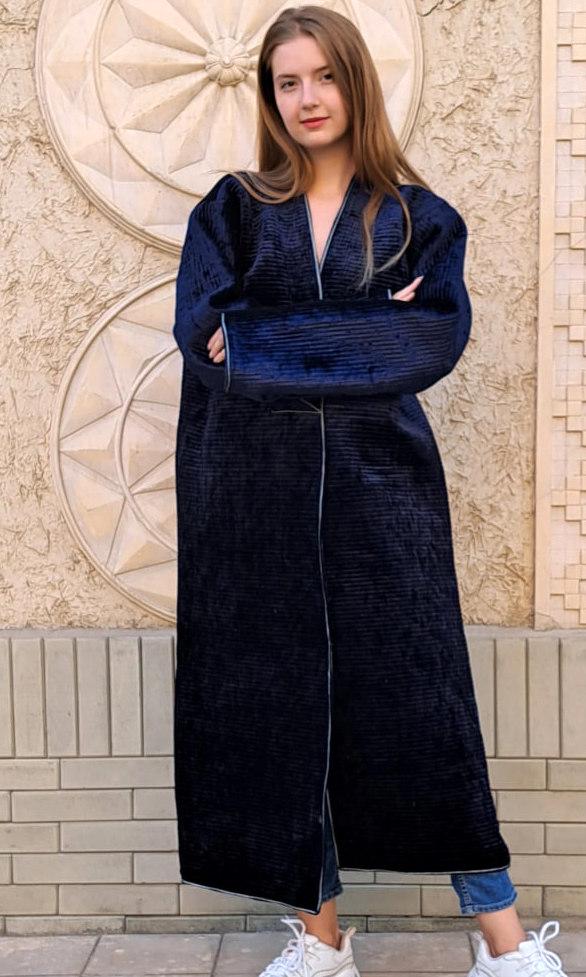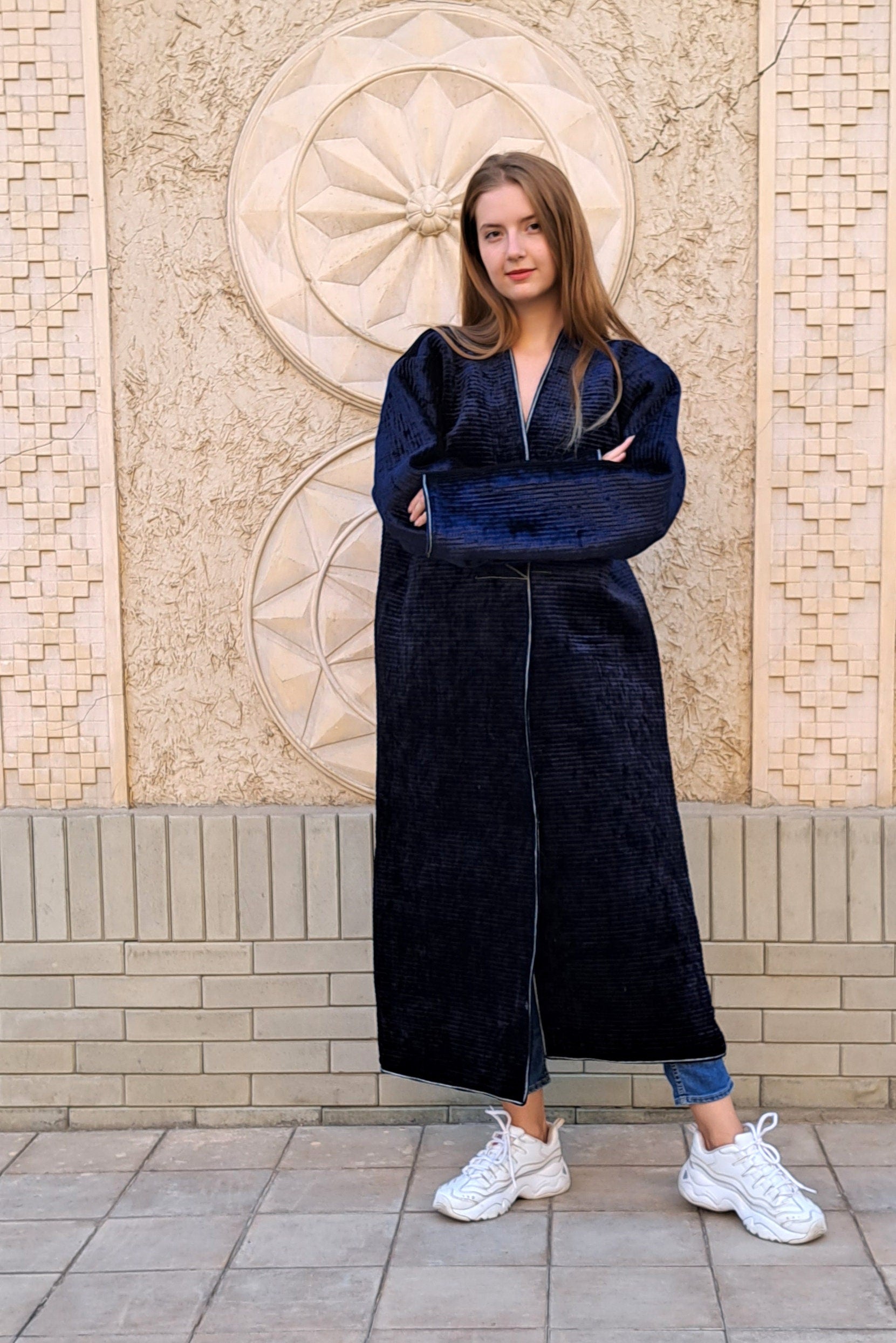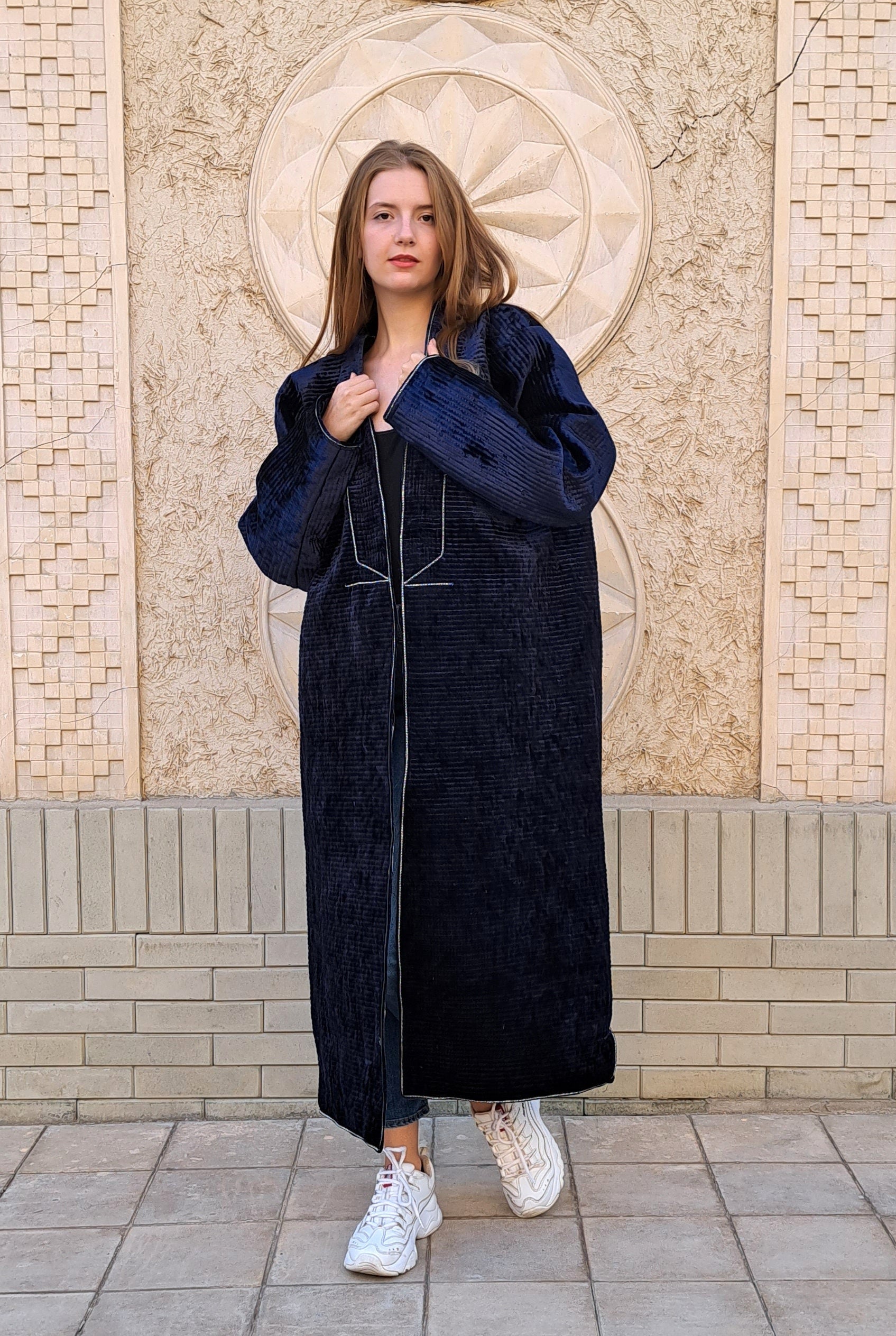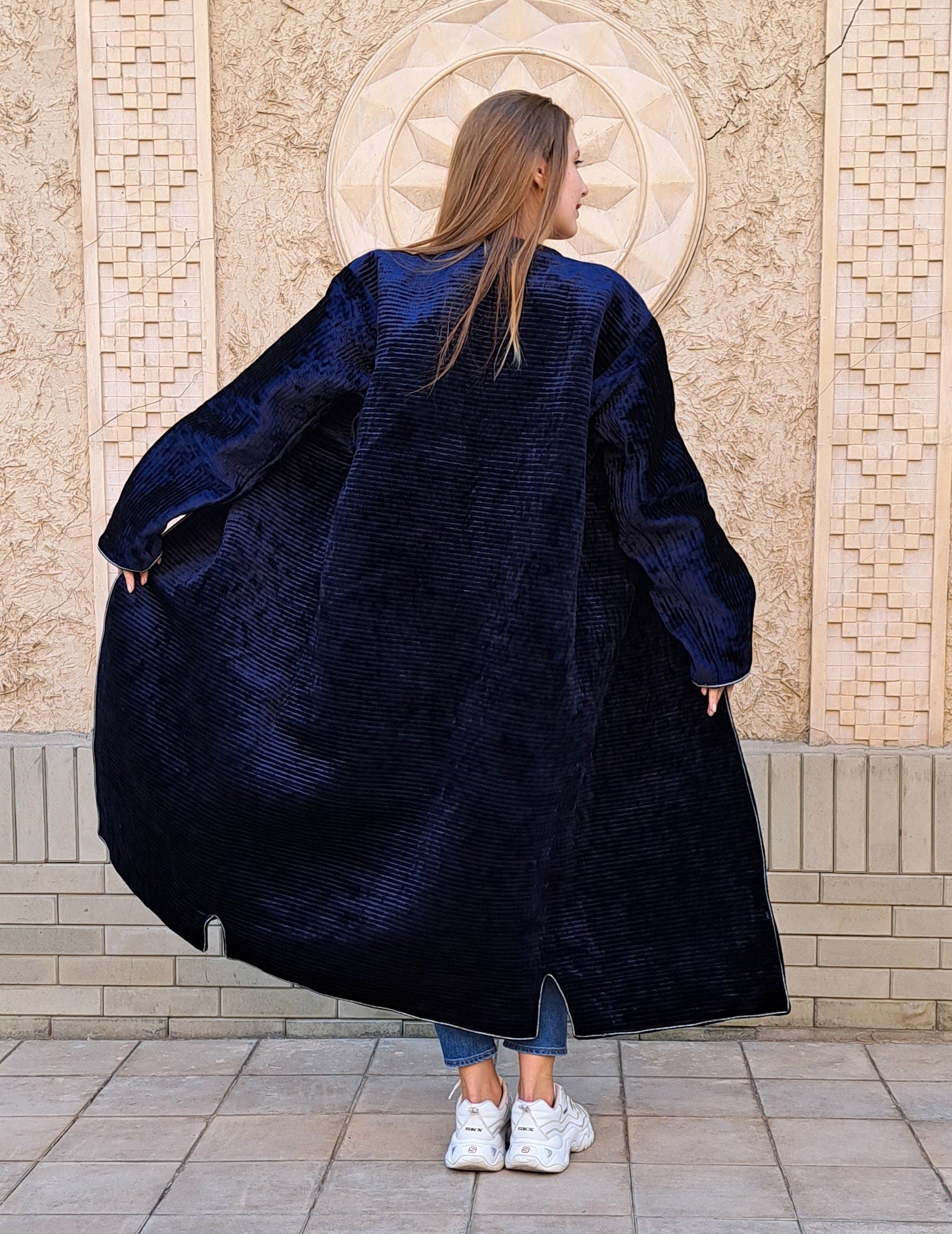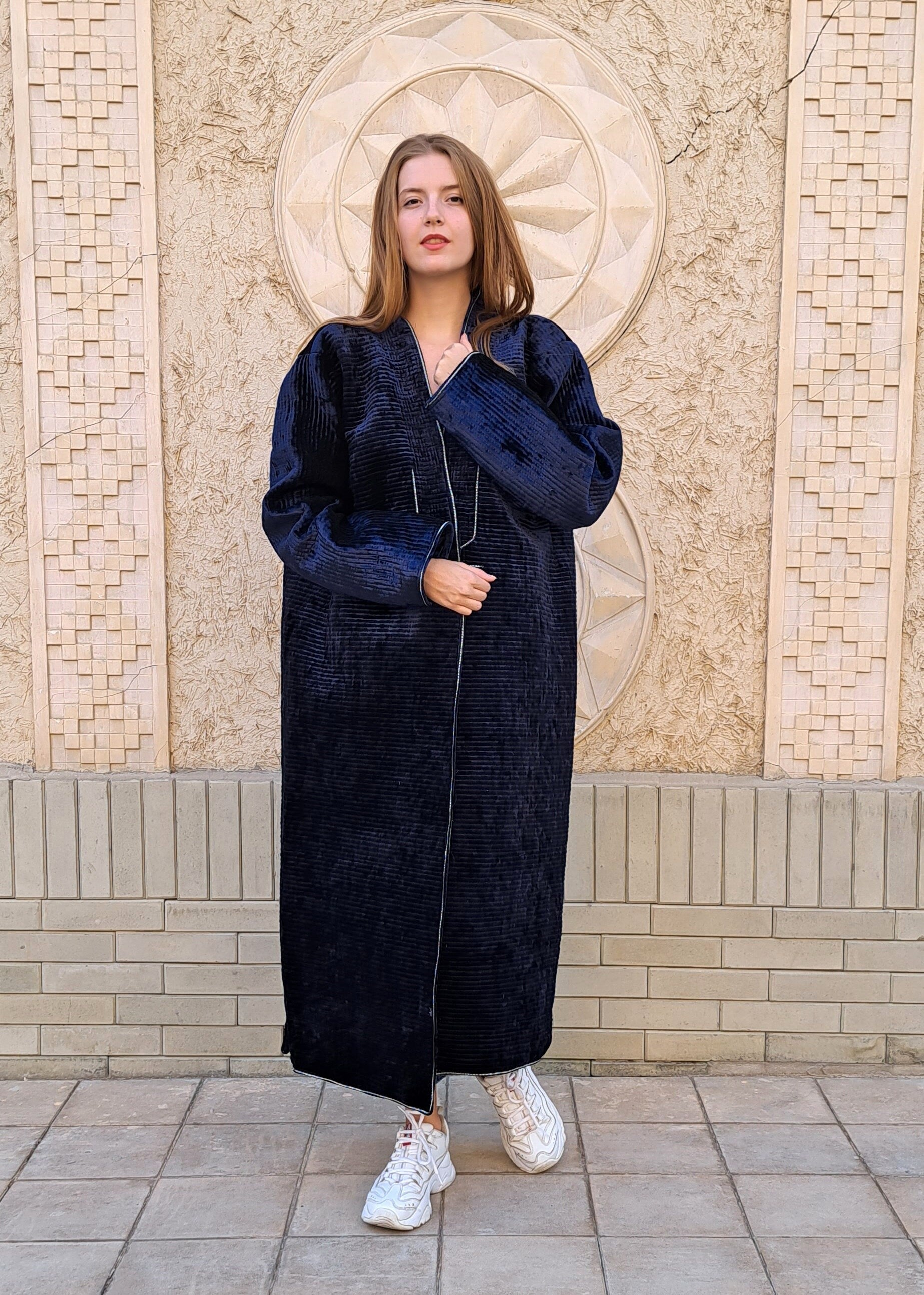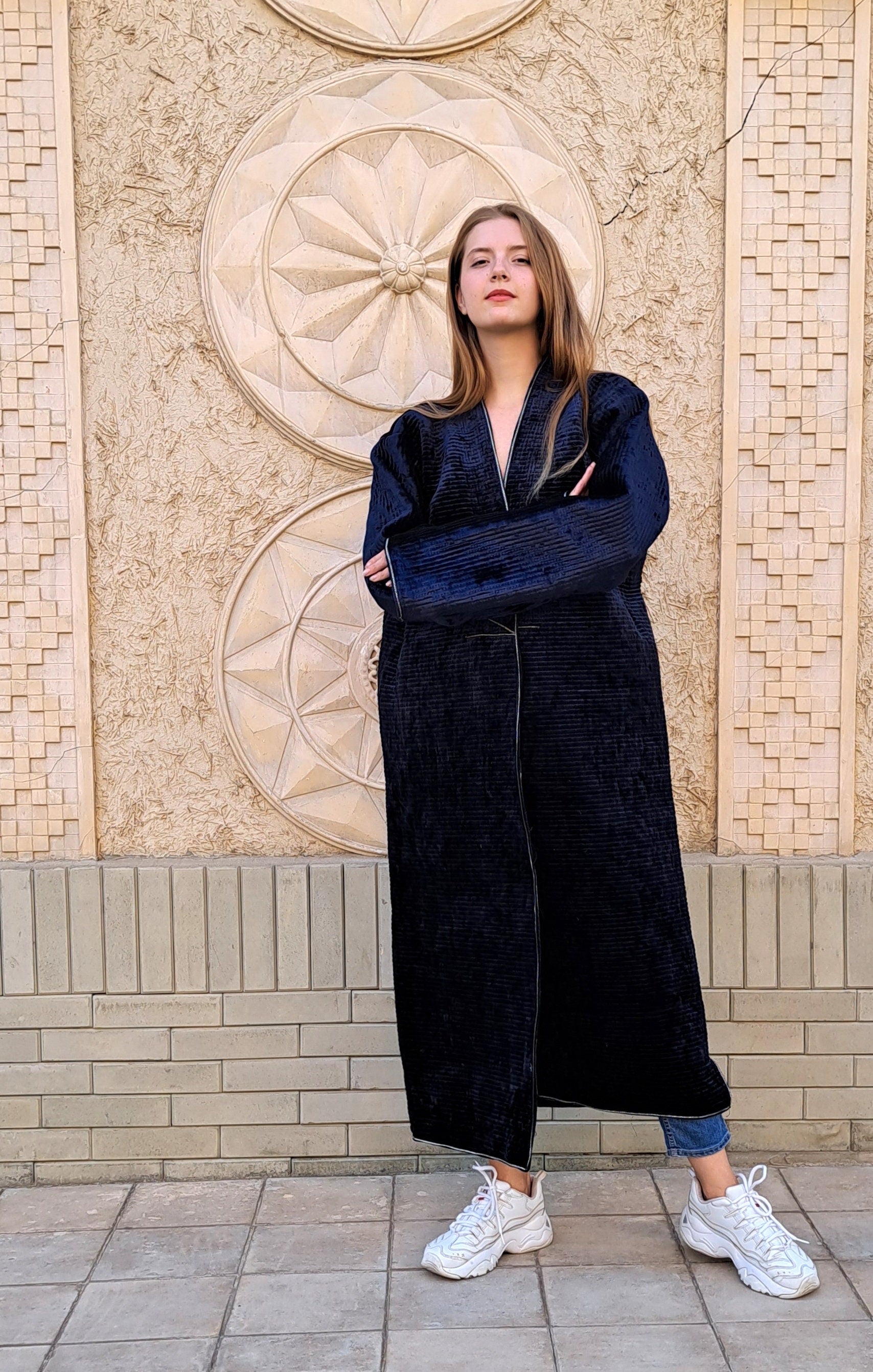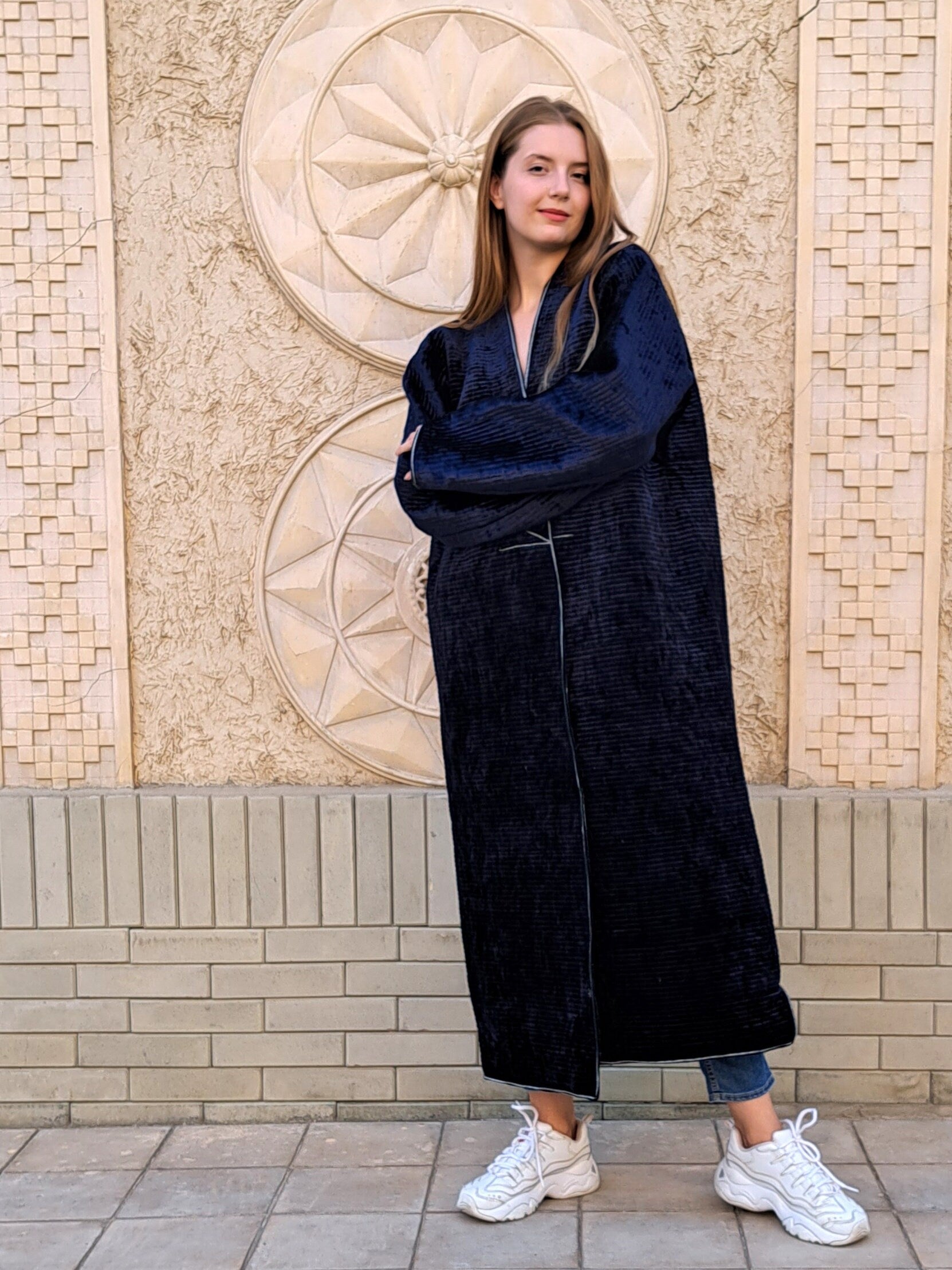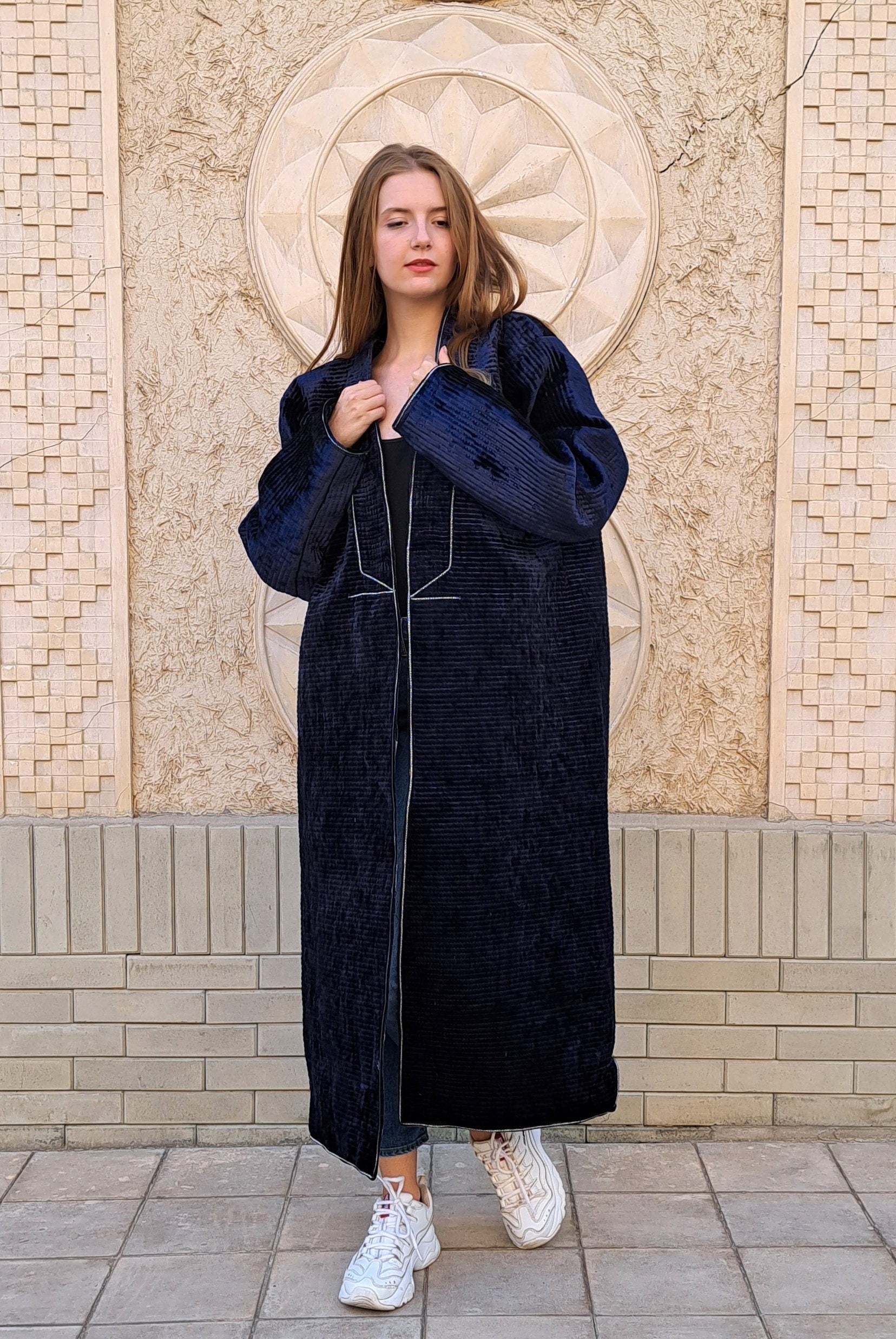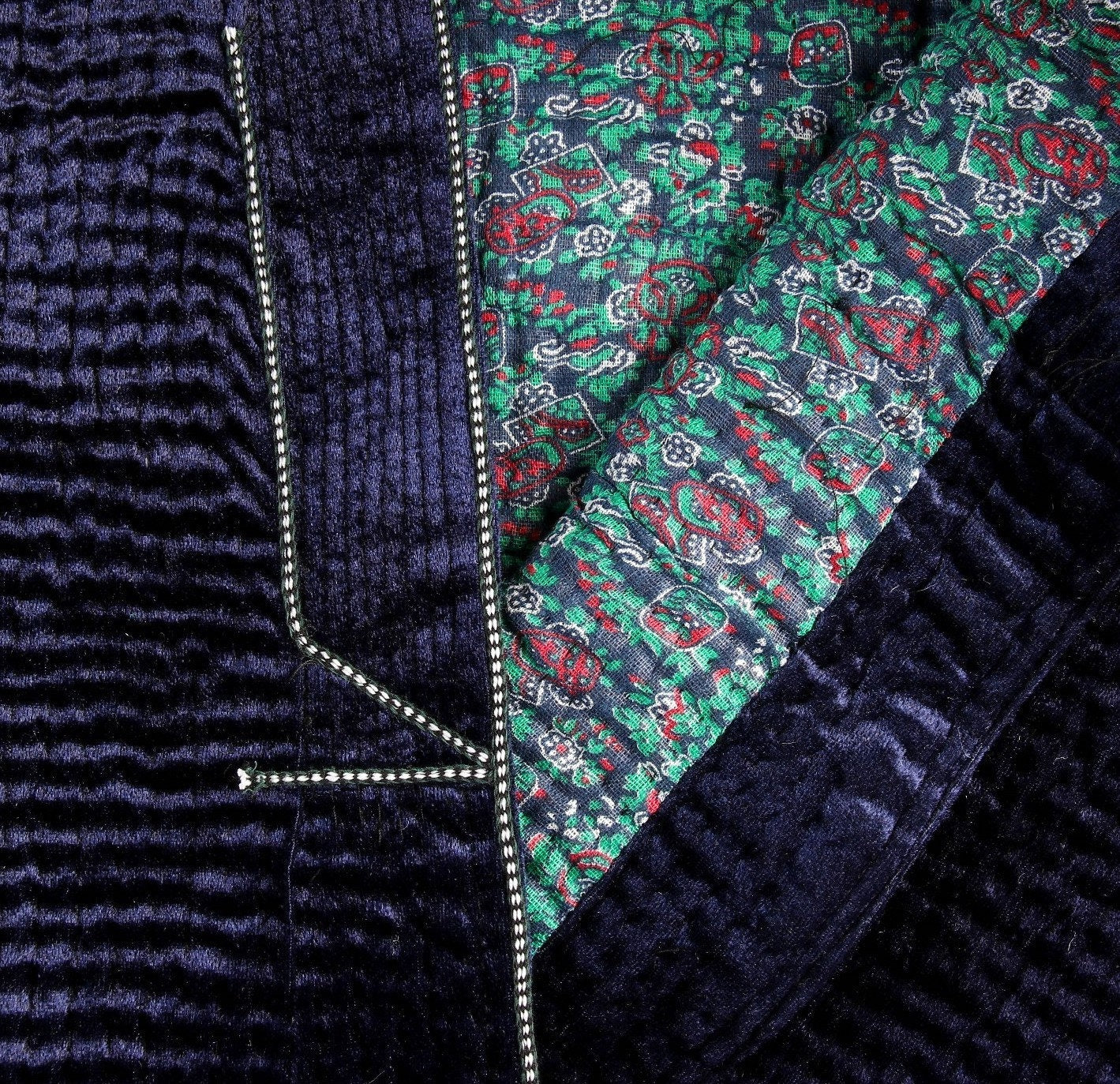1
/
of
10
Suzani Uzbekistan
Uzbek handmade silk velvet warm quilted chapan,coat,robe .Unisex,free size.
Uzbek handmade silk velvet warm quilted chapan,coat,robe .Unisex,free size.
Regular price
$170.00 USD
Regular price
Sale price
$170.00 USD
Unit price
/
per
Couldn't load pickup availability
Please, provide your phone number for shipping purposes.
Traditional Uzbek Silk Velvet Chapan .Unisex.Size free for S/XXL
Qulited with natural cotton. Stitched,qulited with natural cotton.
Measurements: length-125 cm, chest-120 cm,length sleeve-70 cm,hips-130 cm.
The chapan, a type of overcoat also known as khalat or don, was worn throughout the whole of Central Asia by men and women alike. Few divergent stylistic elements indicated whether the garment was intended to be worn by a man or a woman: frequently, the women’s coats had tucks gathered along the armpit, had no collar and were not belted, as is usual for the men’s chapans. Today, sadly, chapans are only worn by elderly gentlefolk.
Chapans are the ideal outerwear for this region, which can be brutally hot in winter and glacial in winter, with hardly any rainfall. In winter it was customary to wear quilted coats filled with cotton, whereas summer chapans were only lightly padded – if at all. All chapans are edged with a woven trim known as sheroza, zeh or jiyak: not only does it beautify the garment, but it is also highly useful as it protects the wearer from evil spirits. There may be no scientific proof of this, but let anybody try to prove it isn’t so.
The many textiles used to line chapans are also there to ward off ghosts, the idea being that the multitude of patterns and fabrics will befuddle any evil spirits and make it harder for them to ferret out the wearer. Well, at least, that’s the textile credo behind it.
What’s more, in Central Asia it is commonly held that all textiles and patterns can be matched with each other; an intriguing aesthetical approach that never ceases to amaze the European-trained eye.
There are two reasons for the over-long sleeves. First, they were an excellent protection against the cold, serving as integrated gloves. Second, they respected the Central Asian custom to keep one’s arms covered as a matter of politeness.
Moreover, the custom of giving chapans to special guests, as wedding gifts and on other special occasions, will not only have delighted the tradesmen at Central Asian bazaars. The more expensive and elaborately embroidered the coat, the greater the honour shown to the recipient.
Share
